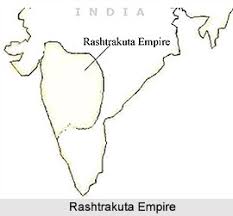The Rashtrakuta Dynasty was a powerful empire that ruled over large parts of South and Central India from the 6th to the 10th century CE. The dynasty was known for its cultural and architectural achievements, as well as its military prowess.

Table of Contents
Origins of the Rashtrakuta Dynasty
They are believed to have originated from the region around present-day Maharashtra and were initially known as the Rathodas. They rose to prominence in the 6th century CE under the leadership of Dantidurga, who founded the dynasty and established his capital at Manyakheta.
Expansion and Conquests
Under the rule of the Rashtrakutas, the empire expanded rapidly and conquered large parts of South and Central India, including present-day Maharashtra, Karnataka, Andhra Pradesh, and Madhya Pradesh. They defeated powerful rivals such as the Chalukyas, Pallavas, and the Gurjara-Pratiharas.
Cultural and Architectural Achievements
The Rashtrakutas were patrons of the arts and architecture, and their rule saw the construction of many magnificent temples and monuments. The Kailash Temple at Ellora, built during the reign of Krishna I, is considered one of the most impressive rock-cut structures in the world. The dynasty also contributed to the development of the Kannada and Sanskrit languages and literature.
Decline and Legacy
The decline of the Rashtrakuta Dynasty began in the 10th century CE, as the empire was weakened by internal strife and external pressures from invading forces. They were eventually defeated by the Chalukyas of Kalyani in the late 10th century CE, bringing an end to the dynasty.
Despite their eventual decline, the Rashtrakutas left behind a rich legacy in terms of art, architecture, and culture. They played a significant role in shaping the history of South and Central India and left behind a lasting impact on the region’s cultural and artistic heritage.
In conclusion, the Rashtrakuta Dynasty was a significant empire that played a crucial role in the development of South and Central India. Their cultural and architectural achievements, as well as their military conquests, continue to inspire and influence the region to this day.
Important Links